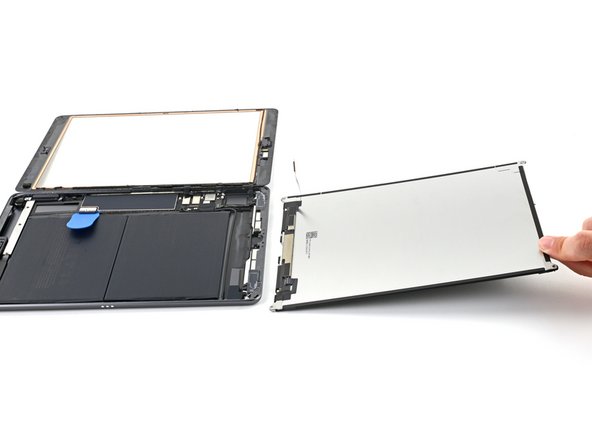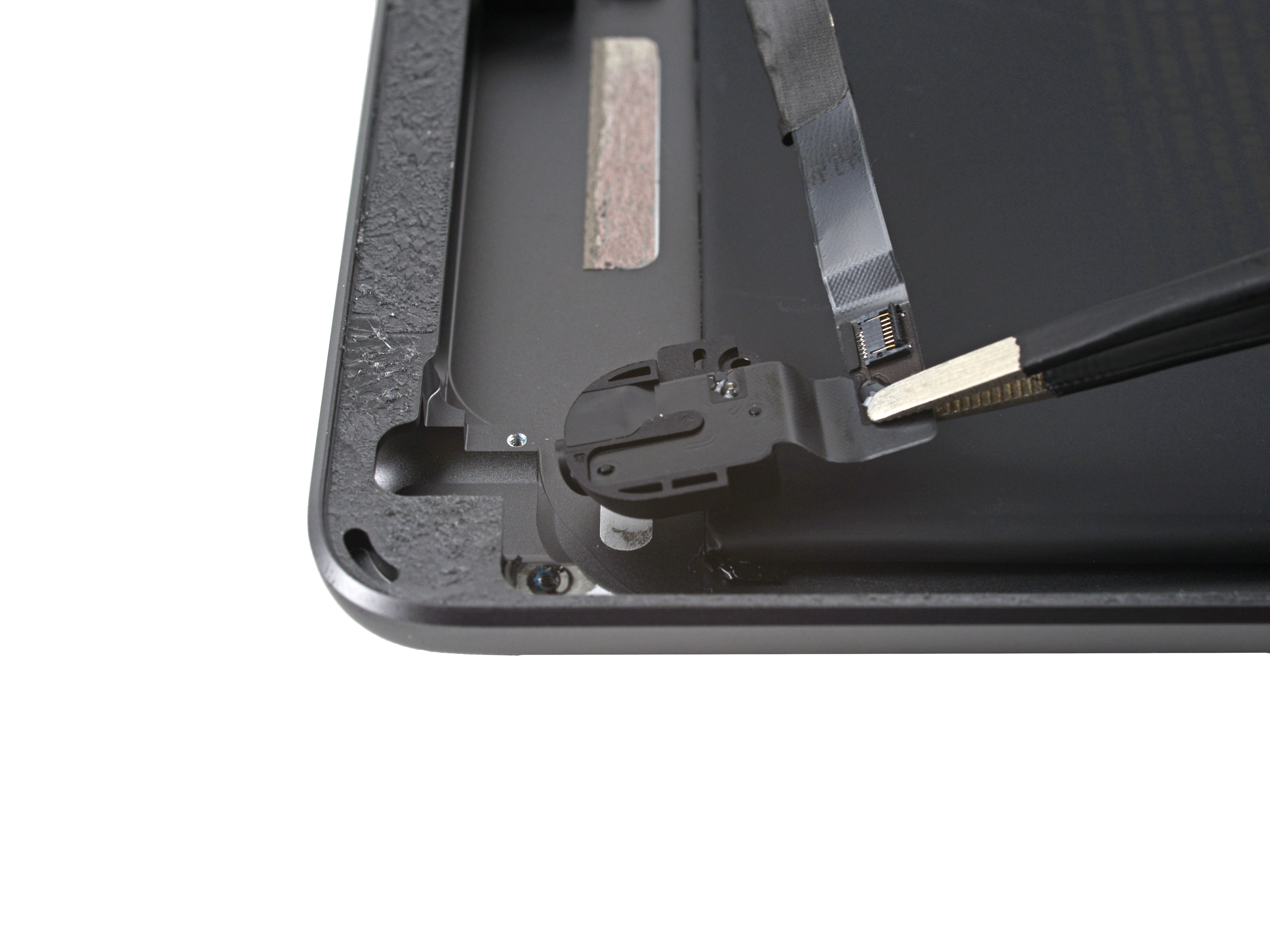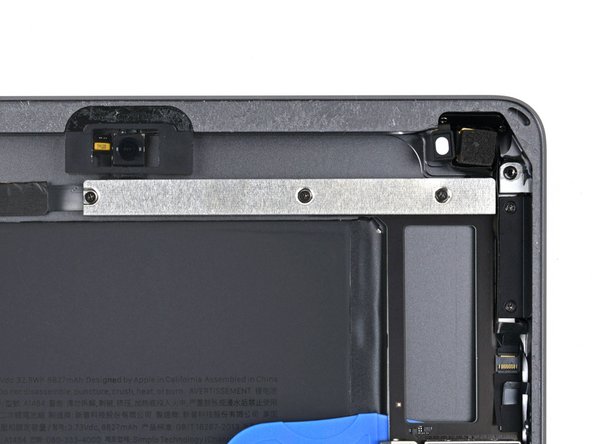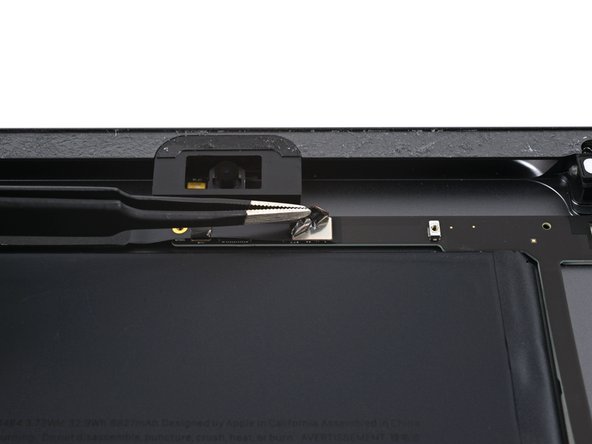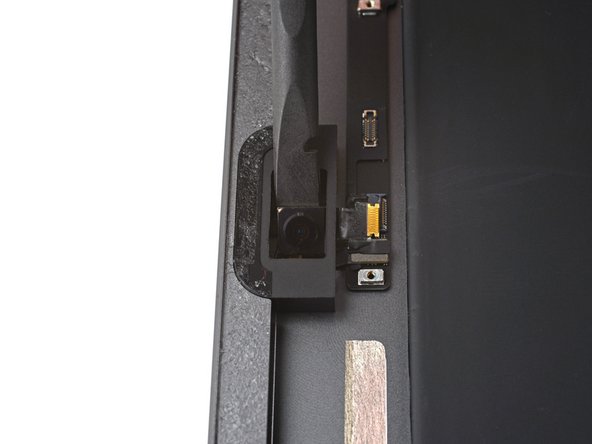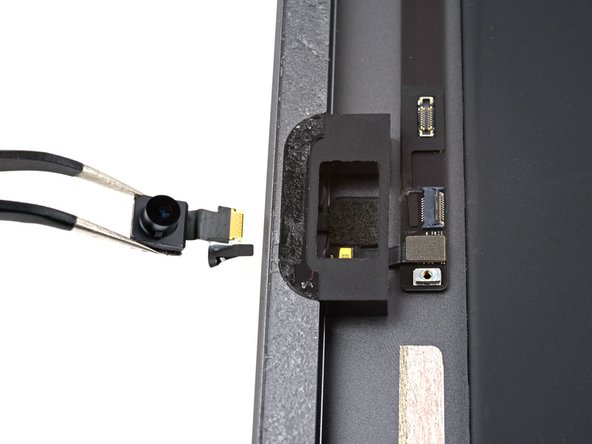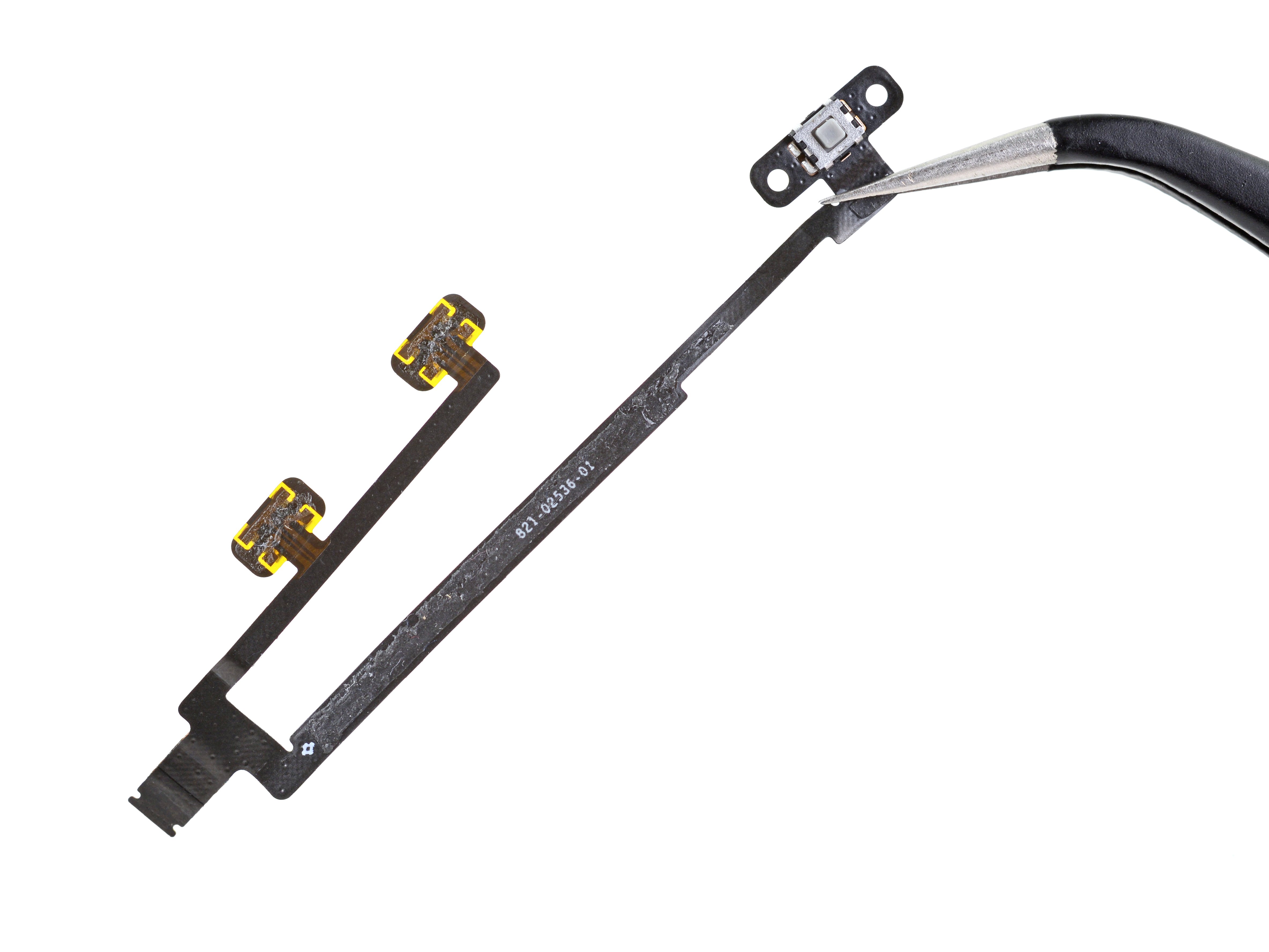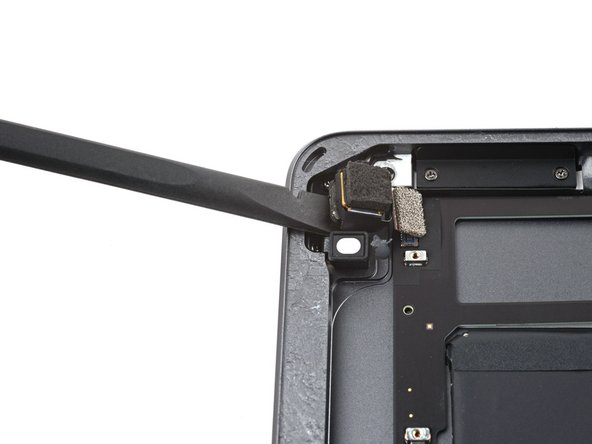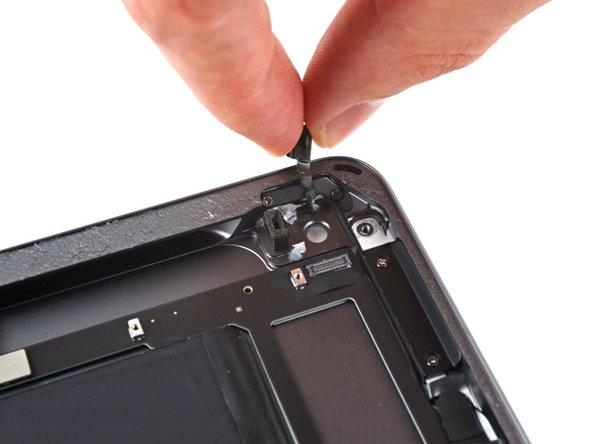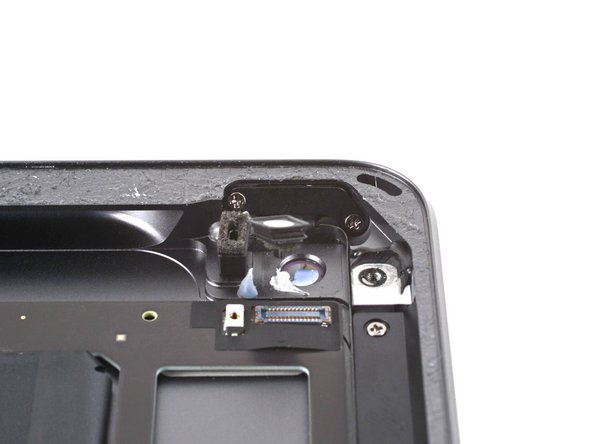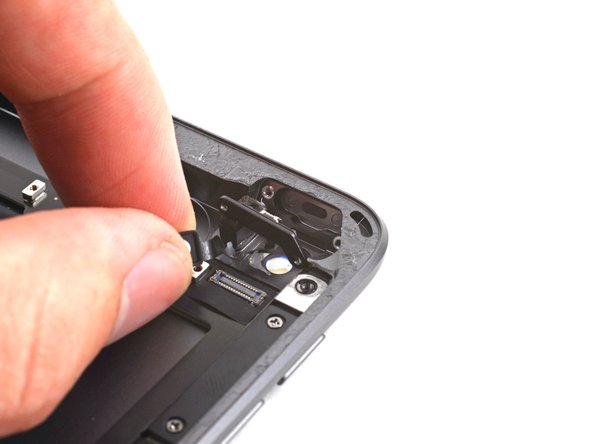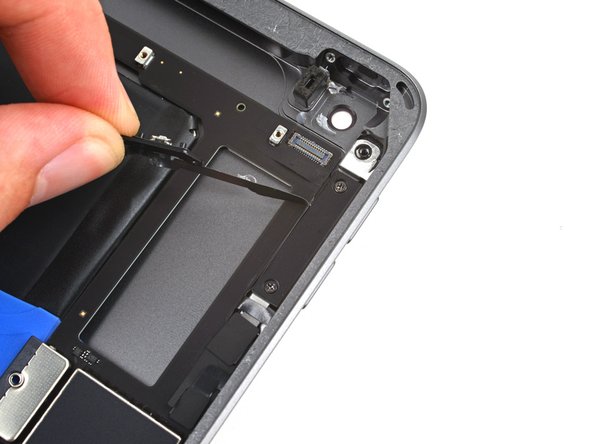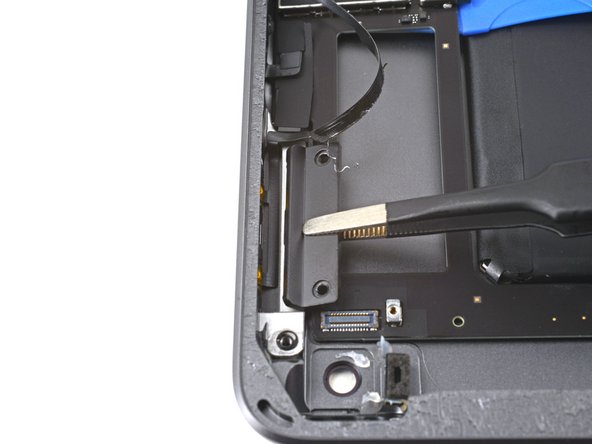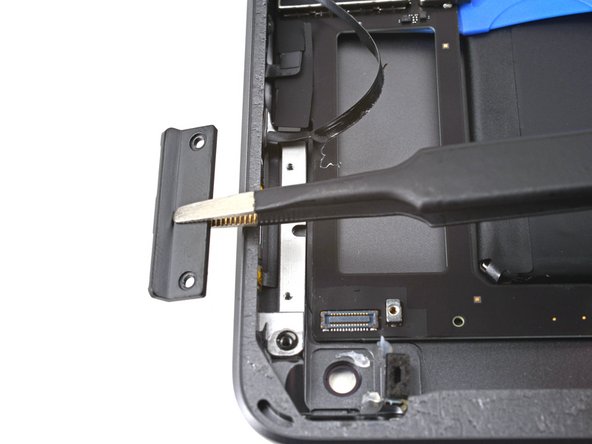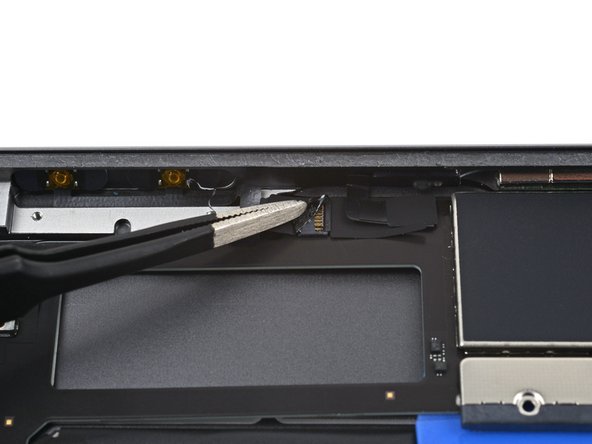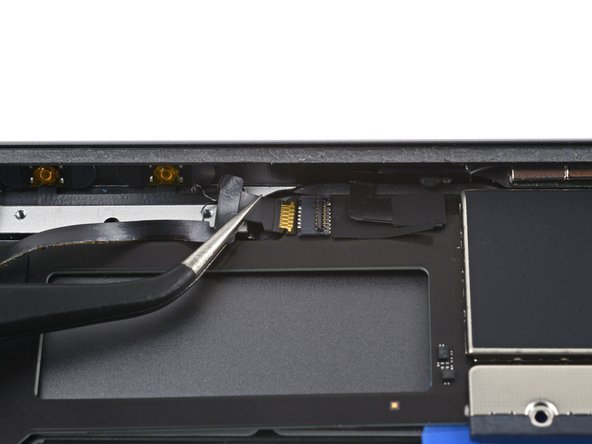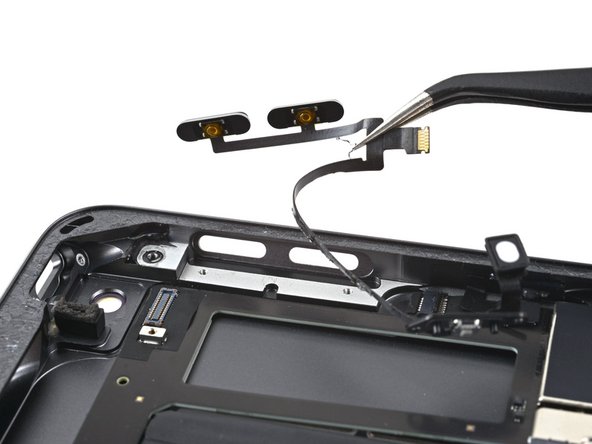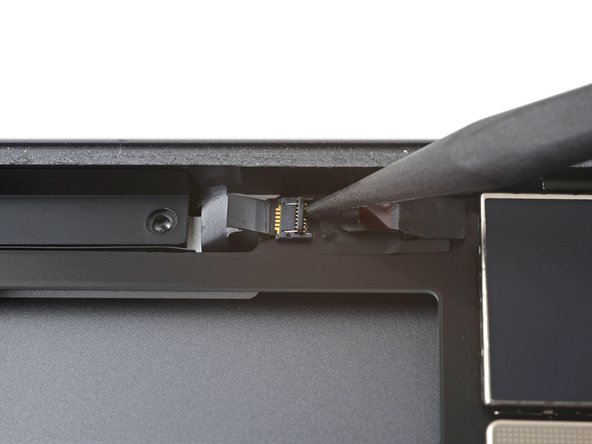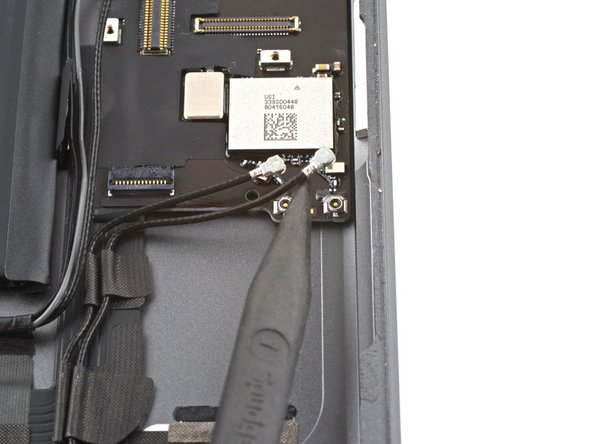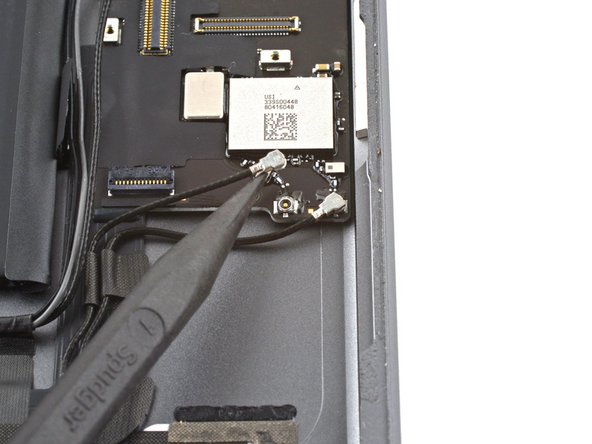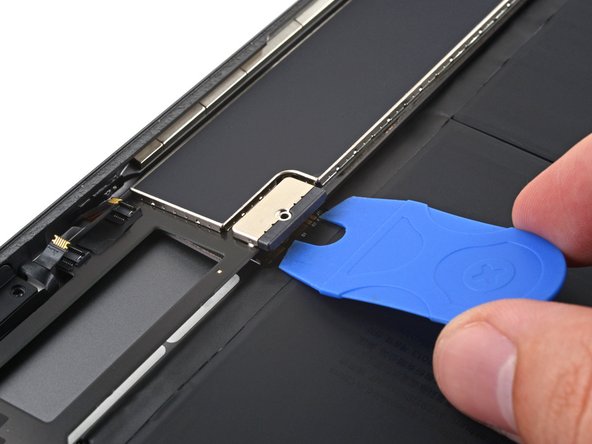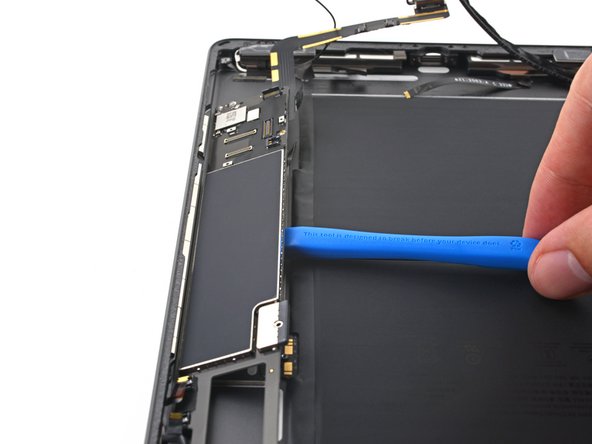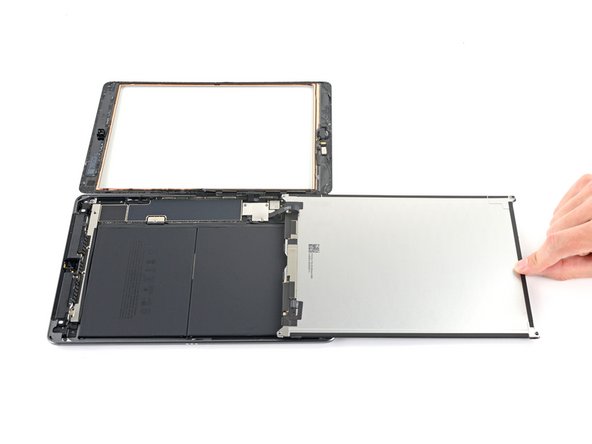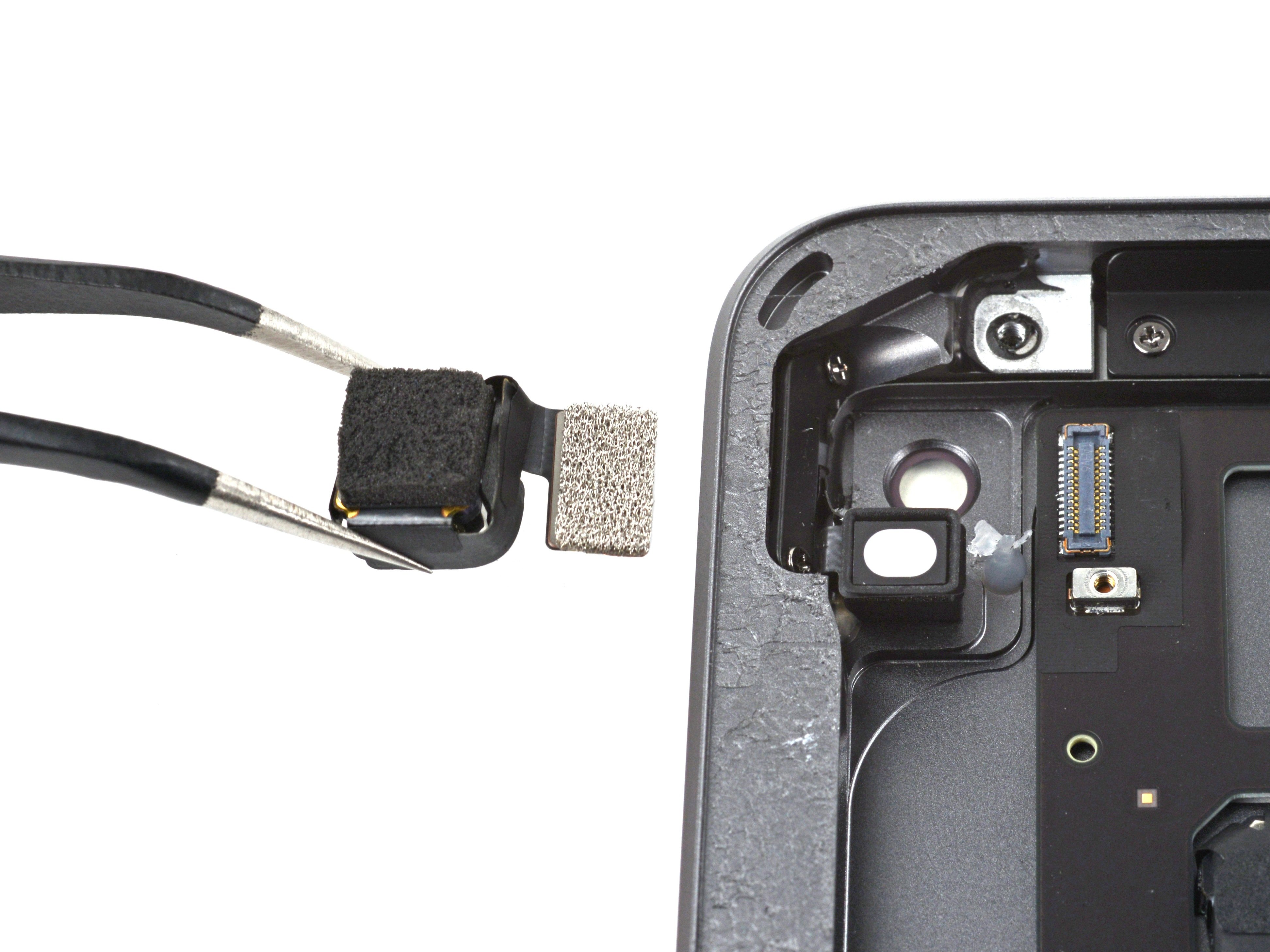Duration: 45 minutes
Steps: 51 Steps
Just a heads up, the home button’s Touch ID sensor is paired with the logic board. If you swap out the home button, you’ll lose that sweet Touch ID feature.
For your safety, make sure the battery is under 25% before you get into disassembling your iPad. It’s always good to keep things cool and safe!
Follow this guide to swap out the home button assembly on your iPad 9 Wi-Fi model. Heads up: this is just for the Wi-Fi version — if you have the LTE model, check out the correct guide instead. Keep in mind, the Touch ID sensor on the home button is linked to your logic board, so swapping it out will disable Touch ID. Before you get started, make sure your battery is charged below 25% to lower any fire risk if the battery gets damaged during the repair. Got a swollen battery? Take extra care! When disconnecting the battery, be super gentle — those contacts are fragile and can be permanently damaged. If you decide not to disconnect the battery, steer clear of metal tools unless you’re dealing with screws to avoid short circuits and harming delicate parts. Some photos you see might be from other iPad models and look a bit different, but don’t worry, that won’t change how you do the steps.
Step 1
Make sure your iPad is completely powered off before diving into the repair.
– Warm up an iOpener and press it against the left edge of your iPad for two minutes. Give it a little time to work its magic and loosen things up.
Tools Used
Step 2
– While the adhesive is softening, keep an eye out for these sneaky spots where prying can cause trouble:
– Front camera
– Antennas
– Display cables
– Ambient light sensors
Step 3
In the next three steps, we’ll show you how to use the Anti-Clamp, a nifty tool we’ve put together to help make the opening process smoother. If you’re not using the Anti-Clamp, just skip ahead by three steps for a different method.
Need more details on how to work with the Anti-Clamp? Check out our detailed guide here.
If you notice your iPad’s surface is too smooth for the Anti-Clamp to grip, simply use tape to add some texture and give it a better hold.
– Pull the blue handle back to release the Anti-Clamp’s arms.
– Set your iPad on something flat so it stays balanced between the suction cups.
– Place the suction cups near the middle of the left edge—one up top and one down low.
– Hold the bottom of the Anti-Clamp steady and press down firmly on the top cup to get a good seal.
Step 4
– Give the blue handle a little forward pull to lock those arms into place.
– Turn that handle 360 degrees clockwise (or until you see those cups stretch).
– Keep an eye on those suction cups—they should stay in sync. If they start to drift out of alignment, just loosen them a bit and nudge the arms back into line.
Step 5
Take it slow! No need to rush—just turn half a turn at a time, and then give it a minute to do its thing. Let the Anti-Clamp and a little patience work their magic.
Want to master using a hair dryer like a pro? Check out this guide for the full scoop.
If the Anti-Clamp isn’t quite making that perfect gap, no worries—just heat up the area a bit more and give the handle a little half-turn clockwise.
– Hold tight for a minute to let the adhesive chill and create a little gap for you to work with.
– If your screen feels more like a popsicle than warm, grab a hair dryer and gently heat along the left edge of the iPad to loosen things up.
– Once the Anti-Clamp makes some room, slide an opening pick under the digitizer to start the separation.
– You can skip the next step, no worries!
Step 6
Here’s how to pop open your iPad using a suction handle.
If the screen is seriously cracked, slap on some clear packing tape to give that suction cup something to grab onto. If you’re feeling extra resourceful, strong tape can stand in for the suction cup. And if all else fails, a little superglue between the suction cup and screen can do the trick.
– Once the screen feels warm to the touch, grab your suction handle and place it as close to the left edge as you can. Get in there nice and snug!
– Gently lift the screen with the suction handle, just enough to create a tiny gap between the digitizer and the frame.
– Slide an opening pick into that gap between the digitizer and the frame—take your time, we’re not in a race here.
Tools Used
Step 7
If you spot the opening pick poking through the digitizer, no stress—just slide it out gently. The LCD should be safe and sound, but watch out for any stubborn adhesive that might want to stick around!
– Slide a second pick into the gap you just made. Easy, right?
– Gently glide the pick toward the bottom-left corner of your iPad, separating that adhesive like a pro.
– Leave the pick in place at the bottom-left corner to keep the adhesive from sticking back together.
Step 8
– If the opening pick gets caught in the adhesive, just ‘roll’ it along the edge of your iPad to keep working through the sticky stuff. It’ll get smoother!
Step 9
– Slide the opening pick up towards the top-left corner of your iPad to break free the adhesive. Nice and steady!
– Leave the pick in the corner to keep the adhesive from sealing back up. You’ve got this!
Step 10
– Warm up your iOpener and place it gently on the top edge of your iPad. Let it sit there for about two minutes to work its magic.
Tools Used
Step 11
– Gently spin the pick around the top-left corner of your iPad to break through the adhesive. You’ve got this!
Step 12
Keep the pick away from the front camera lens to avoid any accidental scratches. The next steps will guide you on how to steer clear of that delicate spot.
– Gently slide the opening pick along the top edge of your iPad, just before you hit the front camera. Take it slow—precision is key!
Step 13
– Gently pull the pick out so only its tip stays wedged between the digitizer and the frame.
– Carefully slide the pick over the front camera to loosen up that sticky adhesive.
– Rest the pick just to the right side of the front camera before moving on to the next step.
Step 14
– Slide the pick back in and gently work it toward the top-right corner to fully cut through the top adhesive.
– Keep the pick lodged in the top-right corner to stop the adhesive from sticking back together.
Step 15
– Warm up an iOpener and stick it to the right edge of the iPad for a solid two minutes to loosen things up.
Tools Used
Step 16
– Gently twist the pick around the top-right corner of the iPad to loosen the adhesive and get things moving.
Step 17
The display cables are about halfway up from the bottom of the iPad. Stop when you’ve slid around 3 inches from the base. Don’t worry, you’re on the right track!
– Pop in a fresh opening pick and slide it smoothly to the center of the iPad’s right edge.
Step 18
– Warm up an iOpener and stick it onto the bottom edge of the iPad for a solid two minutes to get things nice and toasty.
Tools Used
Step 19
Avoid spinning the pick all the way around the corner to keep the antenna safe and sound.
Take a look at the third image—it’s showing the bottom-left antenna, which is tucked neatly underneath the digitizer. It’s easy to miss, but don’t worry, it’s right there!
– Gently slide the bottom-left pick towards the corner to break the adhesive seal. Nice and easy, don’t rush it.
– Keep the pick in place in the corner before moving on to the next step. Patience is key!
Step 20
Slide the pick gently towards the home button, not away from it – you don’t want to accidentally mess with the antenna. Stay on track, and you’re good to go!
If you need to glide the pick over this spot again, just pull it out and pop it back in at the bottom-left corner to keep things smooth.
– Gently slide a new opening pick into the gap you just made along the bottom edge of the iPad.
– Carefully glide the pick past the antenna, stopping right before you hit the home button.
– Let the pick hang out just to the left of the home button before moving on.
Step 21
– Gently slide an opening pick into the gap you’ve created.
– Carefully work the pick underneath the home button, gliding it toward the bottom-right corner. Make sure only the tip of the pick sits between the digitizer and the frame.
Step 22
Slide the pick gently towards the home button, not away from it—this way, you avoid messing with the antenna. Keep it smooth, and everything will stay in place!
If you find yourself needing to slide the pick through this spot again, just take it out and re-insert it at the bottom-right corner. Easy peasy!
– Slide the pick back in and gently glide it toward the home button to fully release the bottom adhesive.
– Set the pick just to the right of the home button and hold tight before moving on.
Step 23
– Warm up an iOpener and place it on the right edge of the iPad for a solid two minutes to get things nicely loosened up.
Tools Used
Step 24
Take it slow and steady with this one. Make sure the adhesive is nice and soft before you start. Use your pick to gently work through all the adhesive. If it feels like it’s getting tough, don’t hesitate to reheat and try again.
If you’re feeling a bit of resistance, no worries! Just reheat those edges and gently work along them with your opening pick. Take it slow and steady—it’ll come apart in no time.
– Gently twist the two opening picks at the left corners of the iPad to nudge the digitizer up a bit, breaking through the last stubborn spots of adhesive holding it down.
Step 25
As you move through the remaining steps, be careful not to touch the back of the glass or the LCD surface with your fingers—fingerprints can be a real pain to clean off.
– Gently lift the left edge of the digitizer to help peel off more of the adhesive along the right edge of your iPad.
Step 26
Heads up! Be gentle with those two digitizer cables when you’re prying them open — they’re delicate and deserve some TLC.
– Gently hold the digitizer in place and slide an opening pick between the two digitizer cables to loosen the final bits of adhesive. Keep it steady, you’ve got this!
Step 27
– After loosening all the adhesive, gently open the digitizer like a book and lay it flat next to your iPad.
– When putting everything back together, wipe off any leftover adhesive from both the frame and the digitizer (if you’re reusing it) using some isopropyl alcohol. Then, stick on fresh adhesive strips or pre-cut adhesive cards to keep things secure.
– Keep a close eye on the display cables during reassembly—fold them neatly under the LCD screen to avoid any accidental damage.
Step 28
– Grab your trusty Phillips screwdriver and carefully unscrew the four 4.2 mm screws holding that LCD in place. Nice and easy.
– As you go through the steps, be sure to keep track of those screws. They’re small, but they’re important! Put them back where they came from to keep everything running smoothly.
– Before you dive in, make sure to peel off any tape that might be hiding those screws. You don’t want anything blocking your path.
Step 29
Hold up! Don’t try to completely detach the LCD just yet. It’s still hanging on by a few cables near the home button.
Just gently lift the LCD from the front-facing camera side, and you’re good to go.
– Gently use the flat end of a spudger to lift the LCD just enough to get a good grip with your fingers.
– Flip the iPad’s LCD over like turning a page, holding near the camera and folding it back over the home button side of the frame.
– Place the LCD face down on a clean, soft, lint-free surface so you can easily access the display cables.
Tools Used
Step 30
– Grab your trusty Phillips screwdriver and remove that tiny 2.3 mm screw holding the battery connector snugly to the logic board. Easy does it!
Step 31
Check out these snaps to see what the battery connector looks like tucked under the logic board. Keep them handy as a guide while you carefully detach the battery.
Heads up! The battery connector has little cantilever springs pressing on the battery pads. Since both the logic board and battery are glued down, you’ll want to gently slide a thin, flexible tool between the contacts to pop the battery loose.
Step 32
Take your time following the steps when using a battery blocker to isolate the battery. The battery contacts are pretty delicate and can bend or break easily, causing damage that can’t be fixed.
Make sure the logo on the battery blocker is facing up—no upside-down surprises!
Avoid forcing the battery blocker under the connector. If it’s being stubborn, try sliding in a playing card to gently disconnect the battery instead.
The battery blocker or playing card should glide under the logic board smoothly, without any resistance, and settle at around a 15-degree angle once in place.
– Gently slide the battery blocker underneath the logic board’s battery connector, aiming for a smooth 35-degree angle.
– Keep that battery blocker right where it is while you continue your work. It’s got your back!
Tools Used
Step 33
– Grab a Phillips screwdriver and remove those three tiny 1.4 mm screws holding the display cable bracket in place. You’ve got this!
Step 34
– Take off the display cable bracket, it’s time to unveil the magic underneath!
Step 35
– Gently use the flat end of a spudger to lift and unplug the LCD cable press connector.
– When reconnecting press connectors like this one, line up one side carefully and press down until you hear a click, then do the same on the other side. Avoid pressing the middle—if it’s off-center, the pins might bend and cause serious damage.
Tools Used
Step 36
– Carefully lift the LCD off completely and place it face down on a clean, soft, lint-free surface to keep it safe and sound.
Step 37
– Grab a pair of tweezers and carefully peel off the tape that’s covering the home button cable ZIF connector. Easy does it!
Tools Used
Step 38
– Grab a spudger, an opening tool, or even your fingernail to gently flip up the tiny, hinged locking flap on the home button cable ZIF connector.
Tools Used
Step 39
– Grab your tweezers and gently wiggle the home button ribbon cable straight out of the ZIF connector—nice and steady, you got this!
Tools Used
Step 40
Careful now! Only pry on the connectors themselves—avoid putting pressure on the socket on the logic board to keep your iPad safe and sound.
– Gently slide the flat end of your spudger under the two digitizer cable press connectors and pop them loose with care.
Tools Used
Step 41
Be extra gentle with the home button ribbon cable—it’s delicate, so avoid poking or tearing it!
– Grab your trusty spudger and gently lift the buffer block from the bottom-right corner of your iPad. It’s like giving it a little nudge to get things moving.
– Now, carefully take out the buffer block. You’re one step closer!
Tools Used
Step 42
The home button cable is gently held in place with a bit of light adhesive.
– Grab a pair of tweezers and gently lift the home button cable off the frame. Take it slow, and be careful not to pull too hard!
Tools Used
Step 43
Grab your trusty opening pick and gently slice through any leftover adhesive that’s still keeping the front panel snug against the frame.
Just a heads-up—if the digitizer isn’t insulated properly, it could mess with the touch input by grounding out against other parts. No one wants that!
The insulation itself is pretty sneaky—it’s not visible to the eye and looks nothing like the foam dust barriers you often see on iPads. So, don’t be fooled!
– Take off the front panel assembly carefully.
– If your new display starts acting up with ‘ghost’ or ‘phantom’ touches, no worries! Just slap on a thin strip of insulating tape like Kapton (polyimide) tape on the marked spots on the back of the panel to fix it. Replacement digitizers already come with the right insulation, so this step is usually not needed.
– When putting everything back together, make sure to scrape off any leftover adhesive from the iPad. Then, clean those sticky spots with some strong isopropyl alcohol (90% or higher) and a lint-free cloth. This gets the surface ready for fresh glue and guarantees a solid bond.
– Give your iPad a quick test to make sure everything’s working, then stick on the pre-cut adhesive strips to the back of the display following the display adhesive application guide before sealing it up.
Step 44
The home button cable is held down with a bit of gentle adhesive.
– Gently use your fingers to lift the home button cable off the back of the front panel. Take it easy, you got this!
Step 45
If the adhesive is putting up a fight, no need to wrestle with it. Gently warm up the home button cable with an iOpener or a hair dryer to loosen things up a bit.
– Carefully slide an opening pick under the home button cable to loosen it from the front panel.
– Smoothly push it forward to slice through the adhesive holding the home button cable in place.
– Keep sliding the pick along until you arrive at the home button bracket.
Tools Used
Step 46
– Carefully slide an opening pick under the top of the home button cable to gently detach the metal contact from the home button bracket. Take your time, this part is all about precision!
Step 47
– Warm up an iOpener and place it on the home button bracket for about thirty seconds to loosen things up.
Tools Used
Step 48
– Grab your opening tool and carefully work your way around the home button bracket, prying it gently off the front panel. It should pop off with a little patience.
If you bend or warp the home button bracket, you might find that your home button loses its satisfying ‘click’ when you put everything back together. Keep it straight to keep it snappy!
If the home button bracket starts to bend before it pops off, try adding a couple of drops of high-concentration (90% or higher) isopropyl alcohol to the bracket mounts. It’ll help loosen things up and make the process smoother.
Step 49
– Take off that home button bracket carefully.
– When putting it back, grab some strong glue like E6000 to keep it stuck tight to the front panel assembly.
Step 50
Take it easy and apply some gentle pressure. The adhesive is connected to a sensitive gasket that could rip with too much force. Slow and steady wins the race here!
– Gently press on the home button from the front of the panel to break the adhesive seal holding it in place. You got this!
Step 51
– Ready to put everything back together? Just follow the steps in reverse, and you’ll be all set.
– Got some e-waste? Don’t forget to take it to an R2 or e-Stewards certified recycler to do your part for the planet!
– Did things not go as expected? No worries, try out some simple troubleshooting tips or, if you’re still stuck, feel free to schedule a repair for expert help.
Success!




























































































